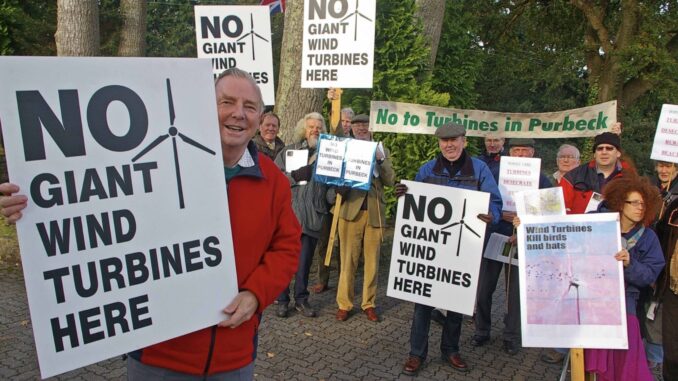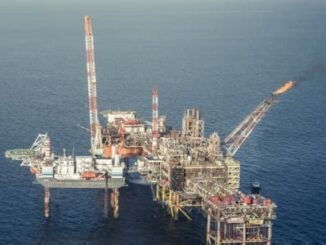
By Kevin Killough, State Energy Reporter
Kevin@CowboyStateDaily.com
Wind and solar projects are facing more local opposition. In a growing number of cases every year, local boards refuse to approve the projects.
The Renewable Rejection Database, a project by energy expert Robert Bryce, shows the number went from virtually no rejections in 2014 to more than 60 in 2015. In 2022, the number rose to nearly 140.
The growth of local-level opposition has so impeded growth of renewable energy that Illinois, California and New York have all passed laws limiting the ability of local governments to stop wind and solar projects.
In Wyoming, Gov. Mark Gordon vetoed a bill that would have prohibited independent power producers from using eminent domain to build transmission lines in support of their projects.
Eminent domain is a law that forces landowners to sell or lease their land at market value for infrastructure projects, which includes pipelines, canals and roads, when they’re deemed to be in the public interest.
Public utilities, which are regulated by the Wyoming Public Service Commission, can still use eminent domain, even if the law had passed, so long as the commission approves it.
Property Rights
In a letter explaining his decision to veto the bill, Gordon said eminent domain is a last resort, but he is concerned with a nine-year moratorium the bill would have placed on the ability to use that last resort.
Gordon said it would “unreasonably stall wind development in Wyoming and limit the opportunity of property owners who seek to develop wind on their property.”
As a state pursuing an “all-of-the-above” approach to energy, Gordon wrote, independent power producers need the option of eminent domain.
It’s not a popular stance with some who oppose eminent domain to support private wind and solar projects.
“Because we have ranchers who lease to wind? Well, I don’t give a darn what my neighbor says. Just because my neighbor leases to wind developers doesn’t mean I want collector lines over my property. I have property rights,” Anne Brande, executive director of the Albany County Conservancy based in Laramie, told Cowboy State Daily.

Conspiracy Theories
Local opposition has become so widespread that articles began popping up suggesting that these movements are funded by oil companies.
For example, environmental activist Peter Sinclair, who has openly admitted he receives money from the wind industry, wrote a piece in Yale Climate Connections last month about Michigan activist Kevon Martis, who has been a vocal opponent of rural projects in his state.
Sinclair said that Martis was serving oil interests. The sum total of evidence Sinclair presents for this claim is that Martis allegedly worked for E&E Legal, which received a $10,000 donation from Arch Coal Inc. six years ago.
In a response to Sinclair’s report, Martis said he was never a paid employee of the organization and only held an honorary position.
Local Funding
Brande said the Albany County Conservancy was founded over concerns of the impacts of wind projects in Wyoming to historic sites.
Her membership and funding comes entirely from concerned Wyomingites. Many of them, Brande said, are environmentalists who are supportive of wind energy but believe the full impacts of these projects are not being completely considered in the permitting process.
“We’re a nonprofit grassroots base devoted to habitat history and wildlife. And there is no funding from fossil fuel at all,” Brande said.
Misinformation
Another NPR report in February claims that local opposition to wind and solar projects in the Midwest are spreading misinformation about wind projects, such as claiming that solar requires too much land and that wind and solar are unreliable energy that destabilize the grid.
To dispute these claims, the article links to an article in Yale Environment 360 that points to Germany as proof that grids work just fine with increasing amounts of intermittent wind and solar.
The Yale Environment article doesn’t mention anywhere that Germans pay two to three times more for their power than U.S. residents or that many of their industries are shutting down because they can’t afford to pay the nation’s energy costs.
Germany has also been increasing its coal production and delaying retirements of coal plants because wind energy production can’t meet demand.
Attack On Rights
Among those the article accuses of misinformation is John Droz Jr., who runs the Alliance for Wise Energy Decisions.
The article claims that Droz is backed by oil companies because he’s a member of the CO2 Coalition, which challenges the idea that climate change will produce catastrophic results. The organization argues policies that rapidly eliminate fossil fuels will have consequences far greater than global warming.
The CO2 Coalition has received small donations from the Koch Foundation, which was founded by Charles Koch, a billionaire who had investments in the oil industry. Therefore, NPR claims, Droz is representing the fossil fuel industry.
“No one has paid me a dime for anything,” Droz told Cowboy State Daily.
Droz said he was in management at General Electric Aerospace, where he apparently did very well. He was able to retire at 34 and had plenty of time for hobbies. He believes science is being attacked, as well as people’s rights, by the push for renewable energy.
“I personally decided that those are two things I was going to spend some time on — No. 1 is to defend my profession, science, and No. 2 is to try to educate people how to defend themselves regarding their own civil rights,” Droz said.
Broken Logic
None of the articles tying oil companies to local opposition to wind and solar projects explains why oil companies would create a false grassroots campaign against wind and solar, while at the same time being some of the biggest investors in green energy.
NS Energy reported that Beyond Petroleum has invested more than $8 billion in green energy investments. Shell has invested more than $4 billion between 2016 and 2020.
In 2021, ExxonMobil announced it was investing $15 billion over six years for carbon capture, biofuels and hydrogen.
History And Wildlife
For Brande, the financial power is with the wind companies.
She said wind energy companies have large resources to promote their projects against grassroots organizations like the Albany County Conservancy.
Brande wanted to build a museum and became concerned about the Rail Tie project, which she said sits in the middle of 160 historic sites. The area is the highest point on the transcontinental railroad.
“If you study historic sites at all, you know that one of the biggest criteria of a historic site is viewsheds because it gives context,” Brande explained.
When she began to voice her concerns, she said she immediately gained support, not just from other history buffs, but also from wildlife conservationists who were concerned about the impacts of wind projects to eagles.
Limited Resources
Brande said there are 12 wind energy projects between Foot Creek and Hannah along Highway 287. Four projects are located several miles from Bamford National Wildlife Refuge.
She said the environmental assessments that wind developers have to do when they’re project is on federal land are over 900 pages. The Bureau of Land Management gives 30 days for public comments on these assessments.
People often aren’t even aware of any potential negative impacts to cultural and historic sites, or the impacts to eagles. Many communities don’t have local newspapers, and the wind developers do their own public relations that overwhelm organizations like her own.
“By the time people discover that [potential negative impacts], they feel it’s too late. But it’s never too late to have a conversation,” Brande said.
Externalities
Droz argues that these negative impacts, which he calls externalities, are not being considered by communities that just see the tax revenues wind projects generate.
As an example, he points to a 2011 study published in Science Magazine that calculates the economic impacts of wind turbines as a result of bats killed by turbine blades. Since bats consume insects, the researchers argue, it causes crop losses.
Using the estimates from the Science study, Droz calculates that Albany County experiences between $1 million and $14 million from the impacts of wind energy.
It should be noted, these figures are extrapolated from a single study that made broad estimates across all counties in the United States.
Whatever the actual impacts to agriculture, Droz’s argument is that there are many of these costs and so the wind industry ends up being a net loss to communities.
Cowboy State Daily reached out to NextEra Energy Resources, which developed the Roundhouse Wind Project, BluEarth Renewables, which is developing the Two Rivers Wind Project, and the developers of the Chokecherry and Sierra Madre Wind projects.



